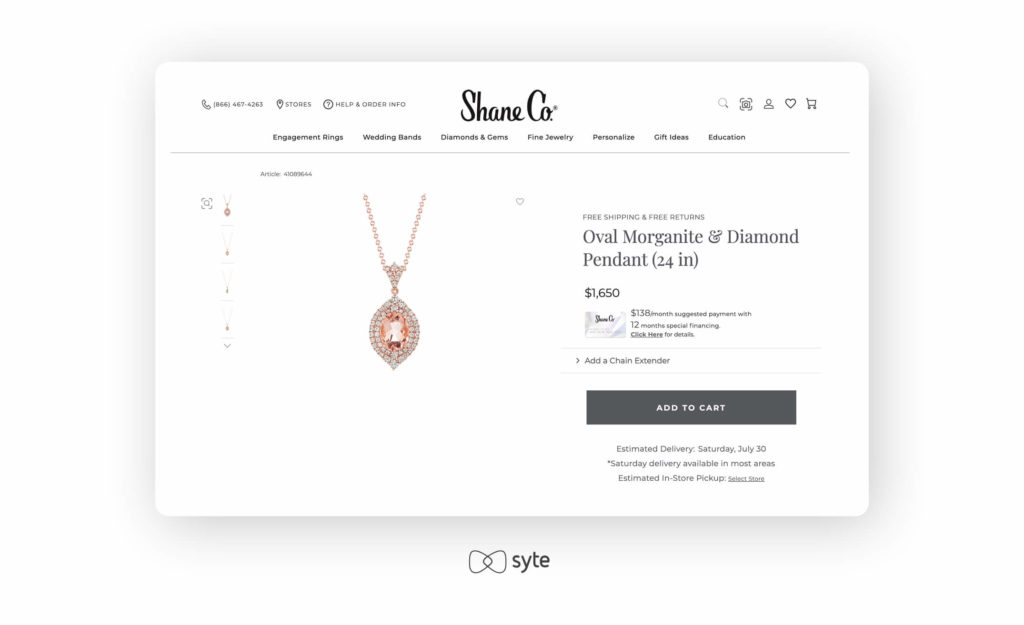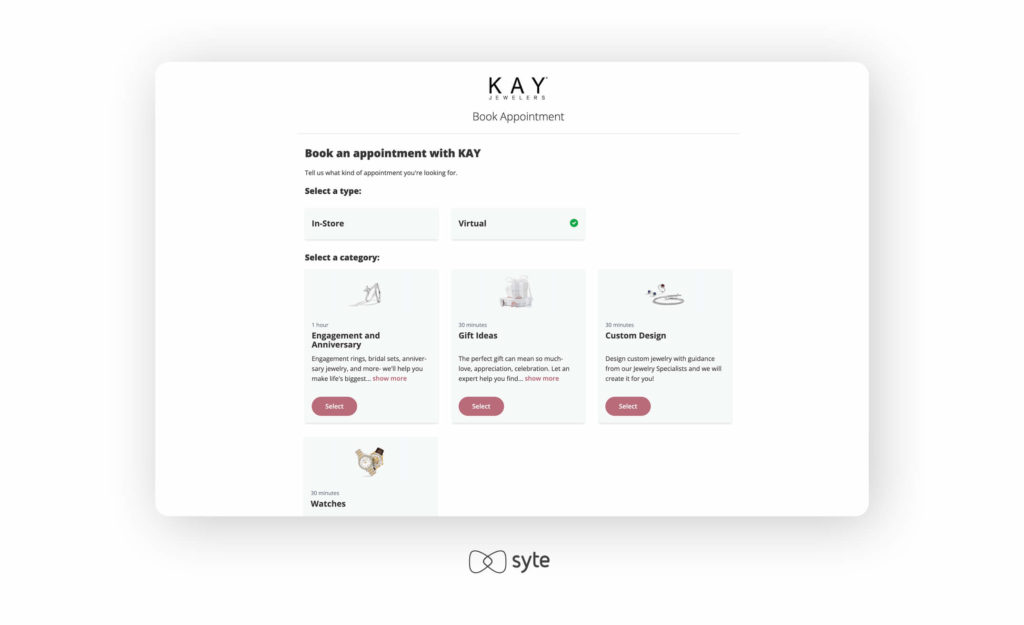This article was originally published by InStore Magazine
While the tide of eCommerce was rising, the jewelry sector was one of the last holdouts—and understandably so.
In the past, few shoppers felt comfortable spending hundreds or thousands of dollars on a piece of jewelry without having the chance to examine it in person or speak face-to-face with an expert.
Over the years, jewelry brands began building robust websites that were often used by shoppers to research and explore before making a trip to a physical store.
But when the pandemic hit, jewelers had no choice but to get onboard with an online-first strategy and hope shoppers would, too.
For the jewelry sector, truly breaking into the eCommerce world wasn’t just about creating online shops or figuring out shipping logistics. Jewelry brands and retailers had to invent a unique shopping experience that could meet the specific needs of their customers and gain their trust.
Through digital transformation and understanding their shoppers’ needs, jewelry companies created innovative, engaging, and inspiring customer experiences that influenced new shopping behaviors and revolutionized business.

Understanding Jewelry Shoppers’ Needs
When the pandemic hit, lockdowns began, and it became clear that eCommerce was necessary for survival, one of the first things jewelry brands and retailers had to do was determine what the ideal online customer experience would look like for their shoppers.
How could they translate the reliability and personalization of in-person shopping to an engaging online experience?
This was something jewelry brands couldn’t just borrow from other retail sectors. In jewelry sales, the stakes are much higher—not only because of the price, but because such purchases are less frequent and often correspond to meaningful life events.
An engagement ring, a wedding band, an engraved watch for a birthday, an emerald necklace to celebrate retirement – these items carry emotional significance. Whether the shopper is buying it for someone else or for themself, they are unlikely to make an impulse purchase. Instead, they are sure to invest significant research and care into the selection process.
To convert these discerning shoppers online, jewelry brands would need to deliver an experience that could instill enough confidence, inspiration, and trust without seeing products with their own eyes.
3 Ways Jewelry Brands Enhanced Their Online Experience
Here are three key ways jewelry brands transformed their eCommerce sites during the COVID-19 pandemic, and how these upgrades created value and instilled trust in the customer experience.
1. Sharper product imagery
The first and most obvious requirement for confidently buying jewelry online is having the ability to closely inspect each piece. Being able to examine different pieces with a high degree of clarity and precision is fundamental to the research and comparison process that most often precedes a jewelry purchase.
With in-store shopping indefinitely on hold, jewelry brands were quick to adopt image-viewing tools that went far beyond your traditional “zoom in” capability. In fact, tools like “superzoom,” 360-degree viewing, and even enabling customers to upload their own UGC of jewelry previously purchased, offered more varied and better inspection capabilities, leading to increased purchase confidence.

2. Visual-AI-powered product discovery
Online, there’s no cheerful sales associate to ask you about your needs and pull the most relevant options for you to look at, so effective online product discovery became crucial.
However, that meant finding a solution to these common obstacles to shopping for jewelry online.
- Most shoppers aren’t familiar with the vocabulary for describing fine jewelry, such as the different diamond cuts or names of materials. As a result, many don’t know how to locate the products they want.
- To your average shopper, it can be difficult to differentiate between two similar-looking pieces unless you understand how to assess their quality and worth.
- Budget sensitivity is inextricable from jewelry shopping. Shoppers don’t want to be bothered with recommendations or listings for products that are well above or below their budgets.
- Shoppers in-store often have the experience of browsing through the glass display cases until they find the piece, the one that makes them stop in their tracks. How can you emulate that powerful feeling online?
Visual-AI-enabled product discovery emerged as the answer. With tools like visual search, shoppers who have an image of what they want but lack the vocabulary to describe it can quickly identify the right products without struggling with a search query. Visual AI has also been used by jewelry brands to help shoppers discover visually similar items to anything that catches their eye, so they can easily shop by an item’s style rather than just the category.
Solutions like this have had such a profound impact on shoppers’ willingness to purchase jewelry online that they have been known to increase conversion by as much as 6.8X.
3. Online concierge services
Clearer, more detailed images and visual AI have a profound effect on both customer trust and engagement, but no one can deny the value of speaking directly with a (human) expert. That’s why many jewelry brands also began offering concierge services.
By offering the chance to schedule one-on-one video calls, concierge services allow brands and retailers to offer face-to-face, tailored consultations by trained sales associates, similar to the high-touch experience they are used to in stores.
For some shoppers, no experience with the website alone will be enough to answer all of their questions. In these cases, having the opportunity to speak with an expert will give them the clarity and confidence they need to make a purchase.

The inability to welcome shoppers in stores at first seemed like a catastrophe for jewelry companies. But now, it’s clear jewelry will never go back to its pre-pandemic offline days.
Today, equipped with advanced technological capabilities and personalized customer support, jewelry brands and retailers now operate some of the most customer-friendly and conversion-oriented eCommerce sites in the retail industry.
In addition, some of these new digital capabilities also enhance the in-store experience. For example, visual AI can combine in-store shopping with access to a library of similar items from the online catalogue when staff or customers are equipped with visual search on their phones or tablets. Blending this technology into physical stores enhances the overall experience and helps customers find the perfect jewelry piece.
By understanding shoppers’ unique needs, concerns, and preferences, and choosing the right technological solutions, shoppers can easily find the right products for their special moments and have the confidence to buy, wherever they are.